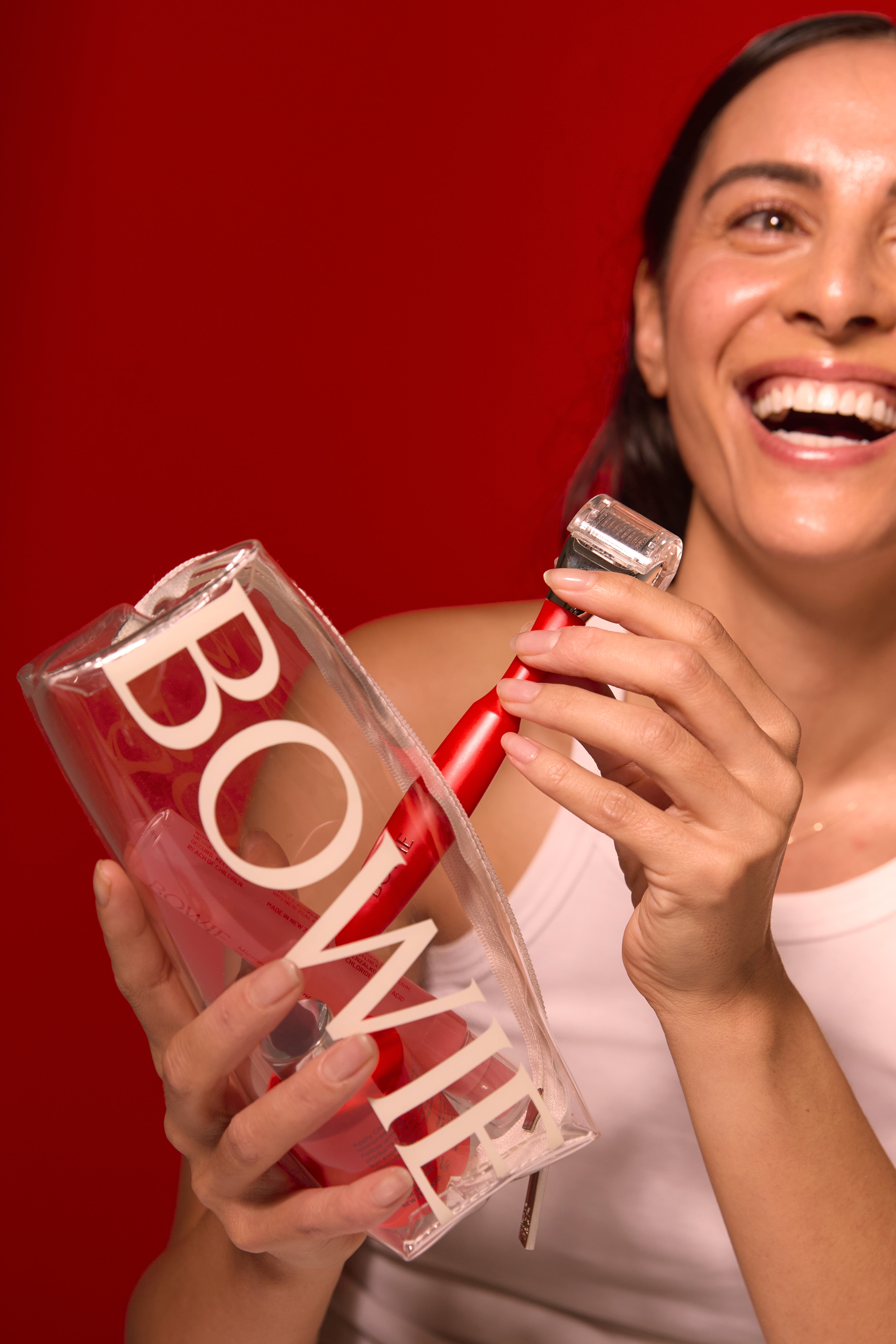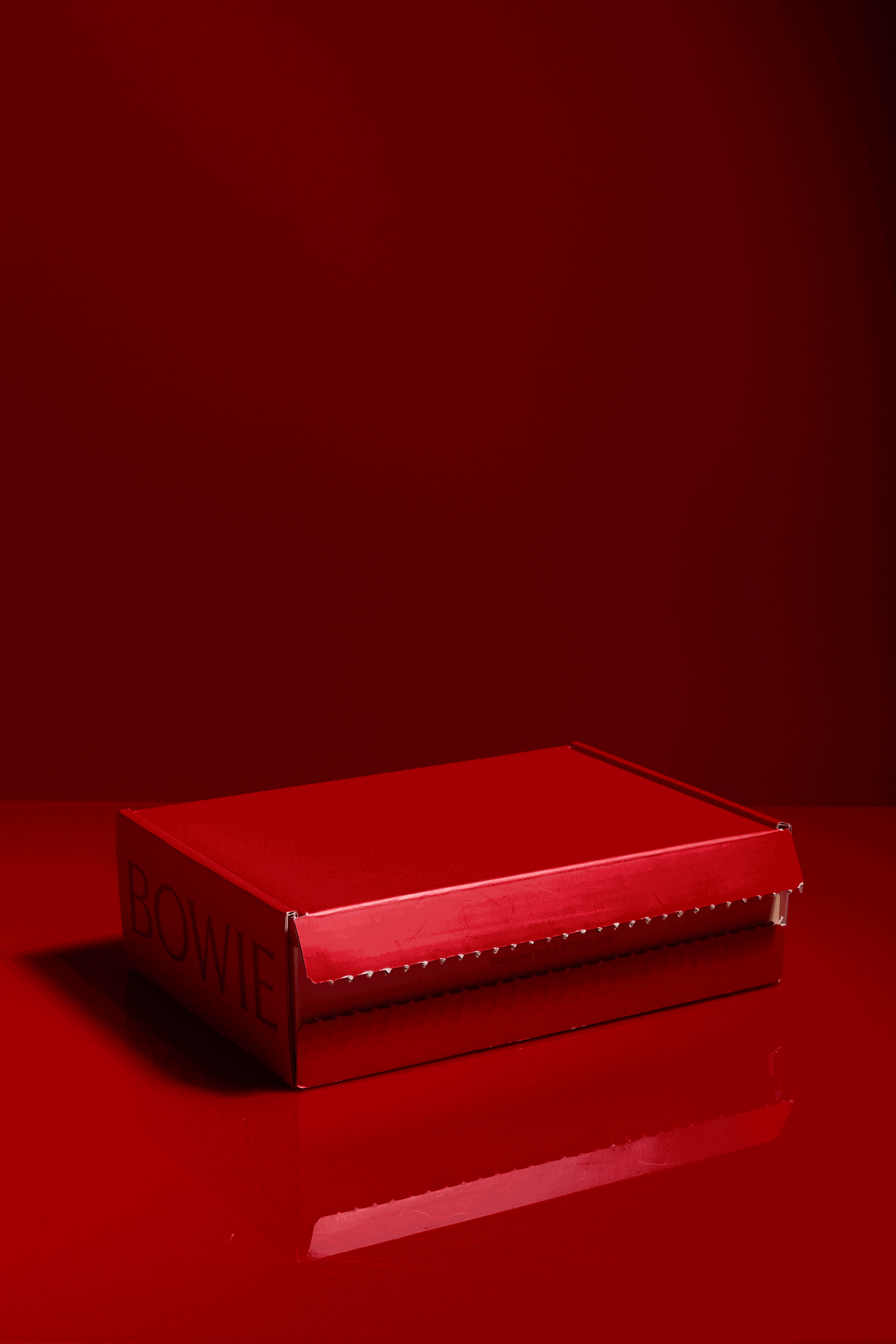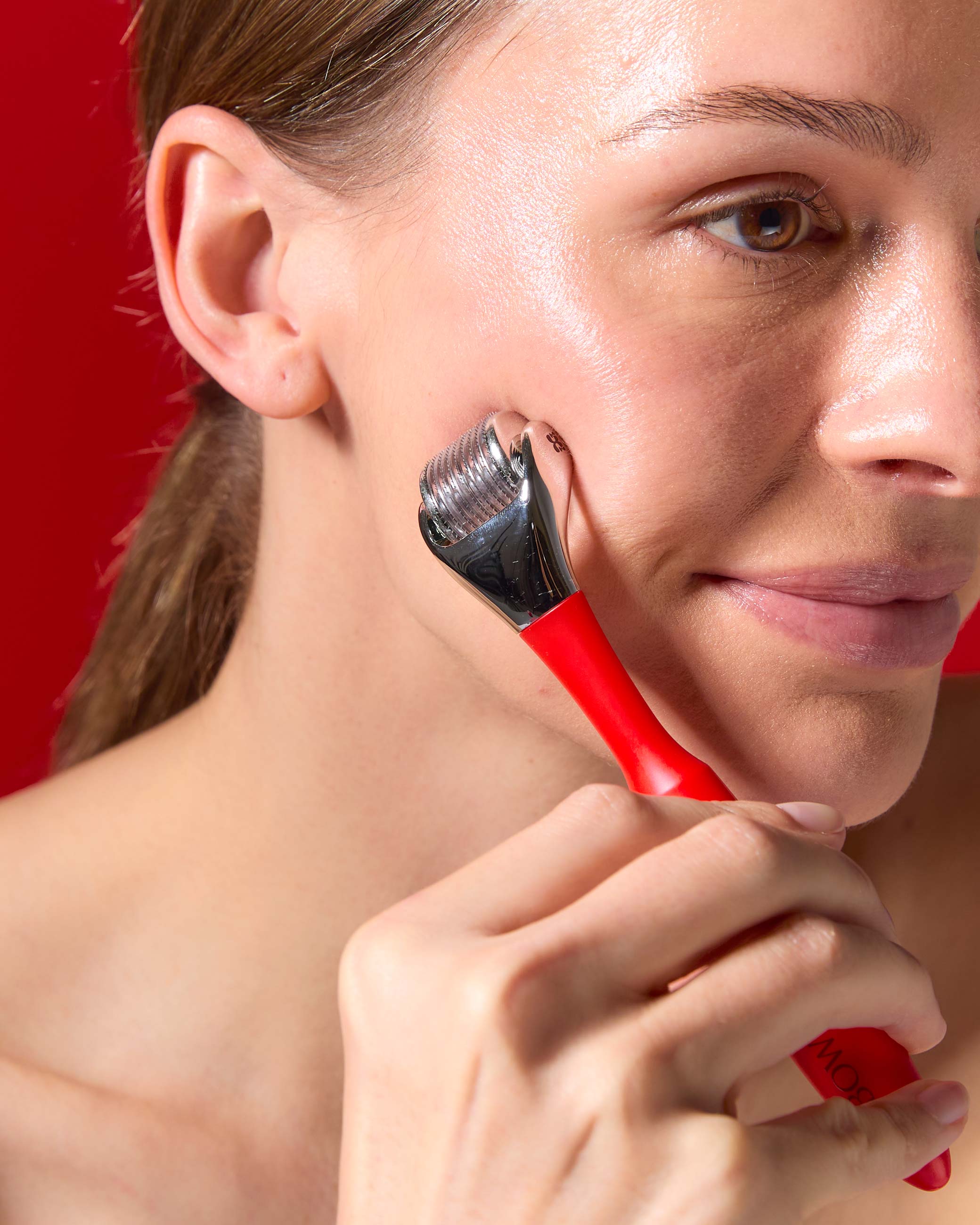FAQ’s
Microneedling
While the idea of nightly needling sounds tempting, your skin needs rest days. We advise using up to three times a week on non-consecutive nights.
We recommend taking at least a one-month break after every eight weeks of microneedling. This allows your skin time to rest and regenerate.
For best performance and hygiene, replace the microneedle head after 20 uses. Simply remove the old head and insert a Bowie Replacement Head.
It is not. But we appreciate that the idea of DIY needling might raise an eyebrow. Rule number one: Tune in to your skin's vibes. Feeling tingly or sensitive? Give microneedling a rain check. If your skin's upset, let it chill before rolling again. Familiarise yourself with your microneedle – how to handle it, when to use it, and when to give your skin a break.
The pain level depends on how intensely you roll. We recommend starting gently. Remember, you are causing a slight injury to the top layer (the epidermis) of the skin, so it’s unlikely to be totally pleasant. At home microneedling shouldn’t break the skin, but will cause redness and that is normal.
Our Bowie Chill Serum is the cooling, calming companion your skin craves after an at home microneedling session. For best results, use the serum immediately after your microneedling, to sooth and hydrate your skin.
*Avoid using products that contain retinoids, Vitamin C and alpha-hydroxy acids (AHAs) for 24 hours after rolling.
Our Bowie Microneedles are 0.5mm, just enough to flirt with the epidermis. Unlike salon needles that dig deeper (approx. 1.2mm), our at-home heroes play it safer. Keep it clean – wash after every use, store it with its protective cap on and give it a pre-use warm water rinse and roll on, Bowie-style.
Hold off on the microneedles if you have sensitive skin. Work on strengthening your skins barriers through simple skincare routines (cleansing / moisturising etc) before you consider microneedling.
Microneedling can amp up your skin's sensitivity to the sun. But fear not, we've got a BOWIE approved work-around: Needle at night and always wear an SPF.
Microneedling is most beneficial for skin showing early signs of aging. For younger skin, it’s usually unnecessary as natural collagen levels are high. As we age and collagen diminishes, microneedling can help but results may be less dramatic. The key is to understand your skins needs – with age, comes wisdom, so we say - age gracefully and microneedle wisely.
Microneedling over active acne is a no-go. Rolling over inflamed areas can spread bacteria and make breakouts worse. Wait until your skin has cleared up before you roll again.
Consistency is key. Most users start to see improvements in skin texture and radiance within 4-6 weeks of regular use. Patience and a steady routine will reward you with that sought after glow.
Hormonal changes can make skin more sensitive and it’s safer to stick to a gentle skincare routine.
It’s best to let the skin breathe after microneedling, so avoid makeup the same night you roll. By the next day, your skin should be fine to apply makeup as usual. Always listen to your skin and apply gentle products post-needling to avoid irritation.
Our Bowie microneedle features a custom-designed handle crafted from high-quality ABS plastic for an ergonomic grip, ensuring comfort during use. The microneedles themselves are made from durable stainless steel, which may contain a small amount of nickel, ensuring safety and effectiveness. If you have allergies to these materials, we recommend consulting with a healthcare professional before use.
At-home microneedling tools like Bowie use shorter, gentler needles (around 0.5mm) that boost radiance and smooth texture without downtime. In-salon treatments, with longer needles (1.2mm or more), provide deeper rejuvenation for more intense concerns like wrinkles and scars. Both options have their merits: salon treatments deliver powerful results, while at-home microneedling offers a convenient way to enhance your skin's health and glow regularly.
Important Note: If you have any doubts or concerns, consult with a dermatologist or skincare professional before attempting microneedling at home. Improper use can lead to adverse effects, so it's crucial to prioritize safety and follow guidelines carefully.
Shipping
For our full shipping policy including local and international rates and delivery times click here.
For our full shipping policy including local and international rates and delivery times click here.
Returns
Yes! For our full returns policy including returns and refunds click here.




